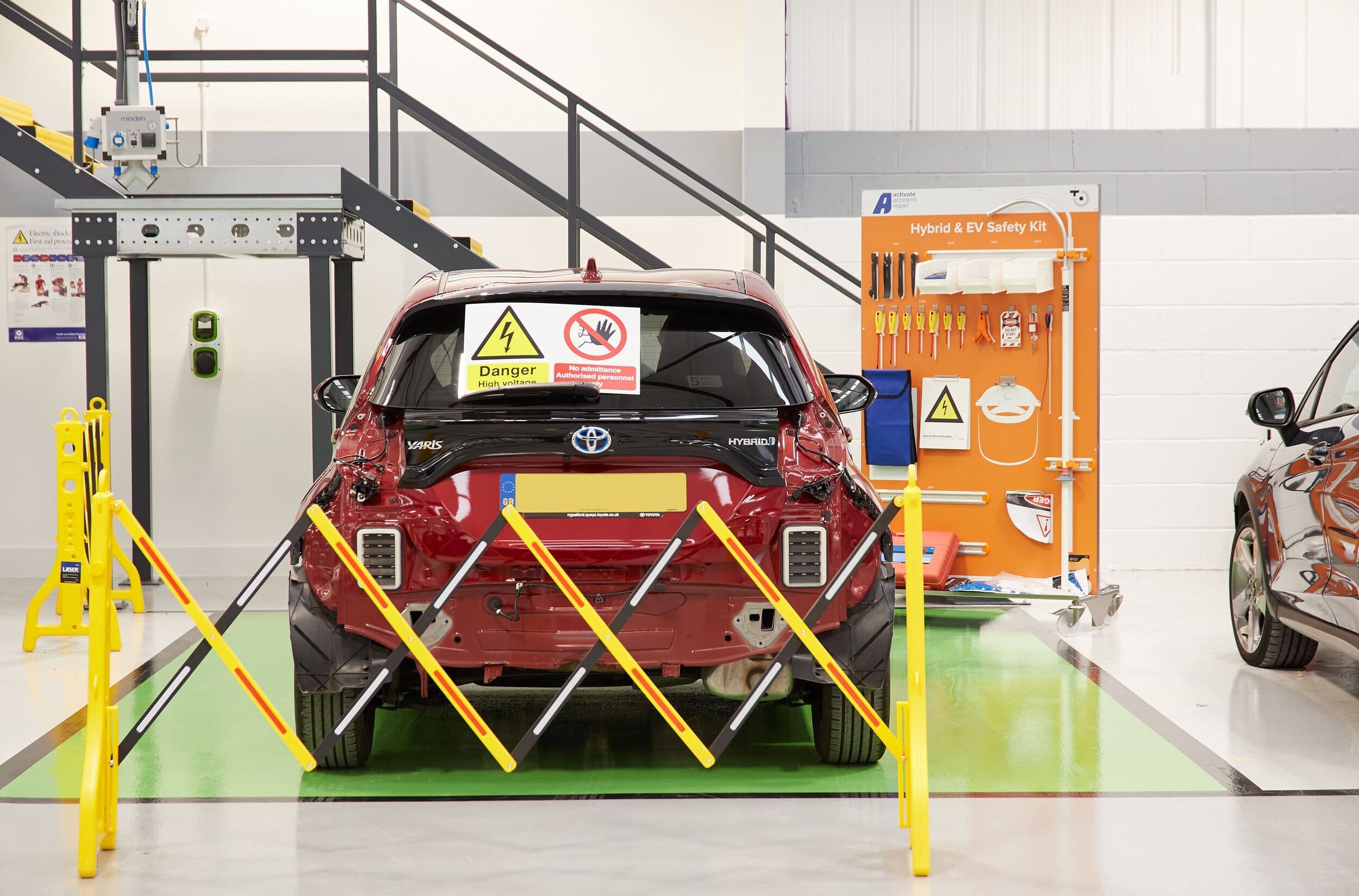As more people make the switch to electric vehicles, repair centres are investing in tools and training to help them safely repair EVs.
In this article, we give an overview of EV repair and what we’ve done to make sure our Activate Repair centres are EV-ready.
Vehicle body repair: EV vs ICE
The body work on an EV isn’t too different from a standard petrol or diesel vehicle, and many repair processes are the same for both.
The big difference is the power source – the EV system. When repairing an EV it’s important to check that the power-train isn’t damaged and shut it down while the body repair takes place.
EV repair therefore requires specialist training, tools and processes.
Can all Activate Repair centres carry out EV repairs?
Yes. All our body shops have a dedicated EV repair bay, and our technicians are fully trained to work with EVs.
Take a tour of our dedicated Warrington repair bay to see how we’re set up to work with EVs:
How can I tell if a bodyshop is EV-ready?
There’s no EV-specific accreditation, but the BSI repair kitemark is a great indicator of quality. No BSI-accredited repair centre would ever offer EV repair without the right training and equipment in place.
There are a few other things you can look out for to check if a bodyshop has the capability to deliver high-standard EV and hybrid repairs.
1- Fully trained technicians
Technicians and mechanics need special training to understand how to work safely with EVs.
At Activate Repair, technicians undertake specialist training that allows them to safely repair electric and hybrid vehicles.
All other team members receive awareness training to help them understand the difference between EV and combustion engine vehicles so they can deliver the best service to our customers.
2 – Dedicated EV repair space
A clearly marked space in the workshop – used for safety when shutting down the power-train.
3 – Specialist equipment and diagnostic tools
An EV-ready repair centre will have insulated tools and mats to keep technicians safe. They’ll also be kitted out with testing meters to check voltage.
After completing a repair, technicians use specialist equipment to check and recalibrate the EV system to manufacturer specifications
4 – On-site charging
Most bodyshops that carry out EV repairs will have a charger on-site.
All Activate Repair sites have EV charging facilities. We use them to charge to the battery once the repair is complete so the vehicle can be safely returned or collected.
In summary
Specialist training and tools are needed to safely repair Electric Vehicles (EVs).
In order to cater for EVs, repairers need to put in place:
- Specialist EV training for repair technicians
- EV-safe processes
- In-house EV repair equipment
All Activate Repair sites have full EV repair capability thanks to investment in facilities, tools and training.


Leave a Reply